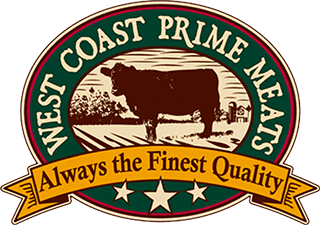Market Update From the West Coast Meatheads

Beef
The cattle complex began the week with only modest declines but those expanded later on and the market slid to new lows. The front-month continuation chart for live cattle fell to its lowest level since August 2010.
Most-active December live cattle hit a new low for the third consecutive week. Feeders saw dual pressure from the steep declines in live cattle and a 12-cent per bushel bounce in corn prices.
October live cattle closed $2.30 lower at $94.45 and December fell $1.825 to $96.175. October feeders were down $2.55 at $119.45. November was $2.95 lower at $114.825.
Trading interest from both retail and foodservice sectors of the market remains moderate at best. Loins continue to devalue. End cut quotations were largely unchanged this week, as were ground beef prices.
October, or “Crocktober” as it is often referred to in the foodie world, is applauded as the start of the slow-cooker season. Slow-cooking applications have grown to massive popularity in recent years, largely propelled by social media and online cooking platforms. Sites like Pinterest have helped catapult protein use at the consumer level by providing a unique source for recipes and ideas.
Not only have these applications helped create a new generation of at-home cooks, but they’ve helped promote the versatility of various proteins in ways that stretch beyond traditional cooking.
This source of indirect marketing has renewed enthusiasm for cooking with meat and has promoted overall protein sales. This year, promotions are coming in from all corners of the industry as Campbell’s, Crock- Pot®, Walmart and tons of other food companies and grocers get involved in promoting slow-cooker recipes and ideas this month. It’s even trending on Twitter with the hashtag, #crocktober.
Pork
In the green meat complex, hams and bellies traded mostly steady all week in limited volume. Fresh 42s and 72s traded higher Thursday with limited supplies and supportive interest noted in the wake of the eastern plant closures. The loin and butt markets have steadied in recent days, and in some cases small premiums emerged because of several idled Eastern plants. Today, premiums were reflected on select items throughout the complex. However sellers are still reporting that they are not seeing significant buyer inquiries as a result of the disruption. Meanwhile, ongoing cutting-and-freezing activity continues to be supportive of the spare rib market.
Chicken
The past two months have been anything but kind to chicken breast meat and tenders. Harvest is still advancing despite it being a time of year when demand typically retreats and market values are reacting accordingly.
Since September 1st, line-run breast tenders have fallen $0.64 or 30% to $1.49/lb. For almost all of this year it seemed as if tenders were untouchable or infallible, but demand has certainly softened. According to the National Restaurant Association, in August, the Restaurant Performance Index (RPI) dropped below 100 for the first time in eight months, credited to significant declines both in same-store sales and customer traffic. Industry analysts are placing at least part of the blame on the aggressive retail promotions, but even so, it seems that this isn’t benefiting the breast meat market much at all. In recent months, wholesale beef and pork prices have come off their record or near record highs and now they’re trading at multi-year lows; retailers have featured items at prices consumers haven’t seen in a very long time. This does not bode well for chicken breast meat, which has dropped $0.40 or 25% since mid-August to $1.22/lb. Now, the question on everyone’s mind is, “how low will they go?”
While no one has a functioning crystal ball these days, what we do know is that in November of 2015, tenders fell all the way down to $1.00/lb and breast meat settled at $1.09/lb.
